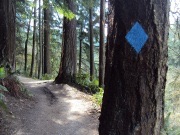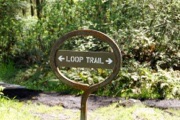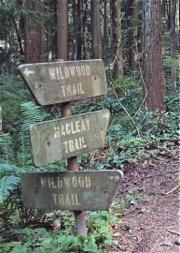Wayfinding
Traditionally, a person who is blind has relied on a guide dog or a long cane to navigate the environment.
With the introduction of new technologies such as real-time passenger information systems, there are an increasing number of ways to help travelers who are blind for which the additional cost is not prohibitive.
What is wayfinding?
Wayfinding encompasses all of the ways in which people orient themselves in physical space and navigate from place to place.
A typical journey for a traveller may involve more than one mode of transport. For example, it might involve walking to the bus stop, a bus to the train station, walking from the bus to the train platform, a train to another town, walking from a train to the taxi stand and a taxi to the final destination.
Working out the optimum combination may not be a simple task since it may be a function of price, times of public transport and accessibility aspects. At present there is no generally available information service which provides a comprehensive service for journey planning including accessibility aspects.
The environment in which we live is becoming increasingly complex; even a bus journey across a city requires a range of skills including:
-
•Being able to avoid obstacles on the pavement
-
•To walk in the right direction
-
•To safely cross the street
-
•To know when you have reached a destination (e.g. found the correct bus stop)
-
•To know which is the right bus
-
•To pay the correct fare
-
•To find a vacant seat
-
•To know when to get off the bus
These tasks may seem trivial, but for someone with no useful vision they are skills which have to be learned. Even for someone with low vision, all these tasks are less easy than for someone who is sighted.
Adapted from a fact sheet prepared by the RNIB [Royal National Institute of Blind People]





Page 27 of 42
Section 3b



Next page
Previous page








